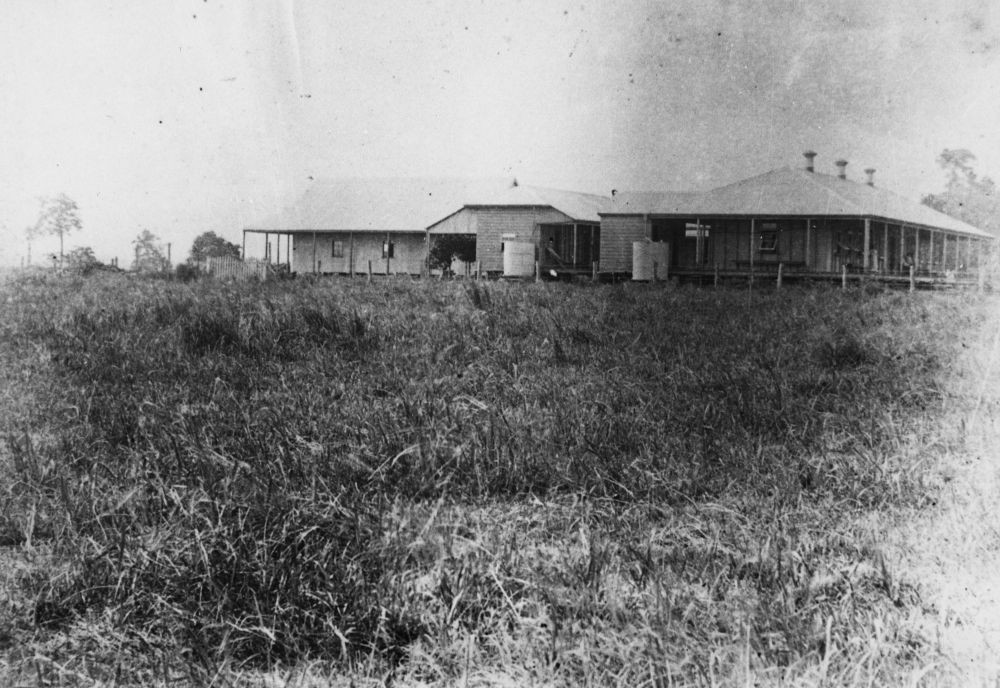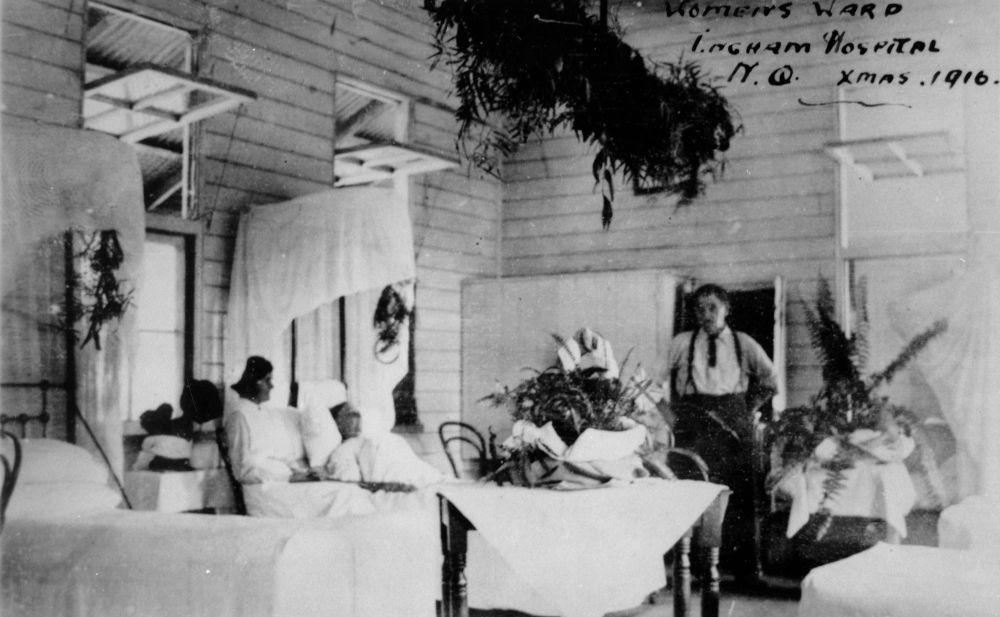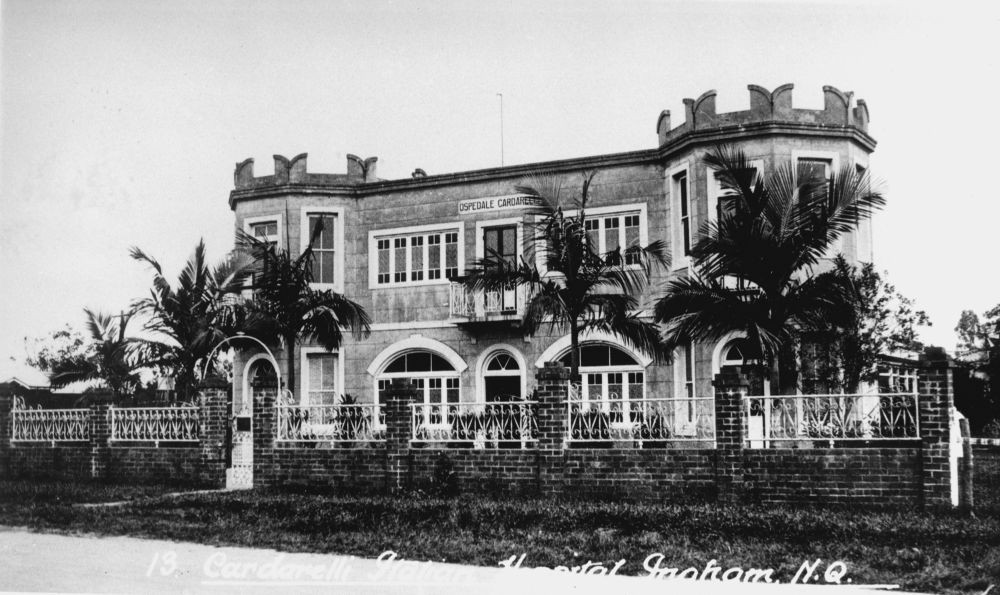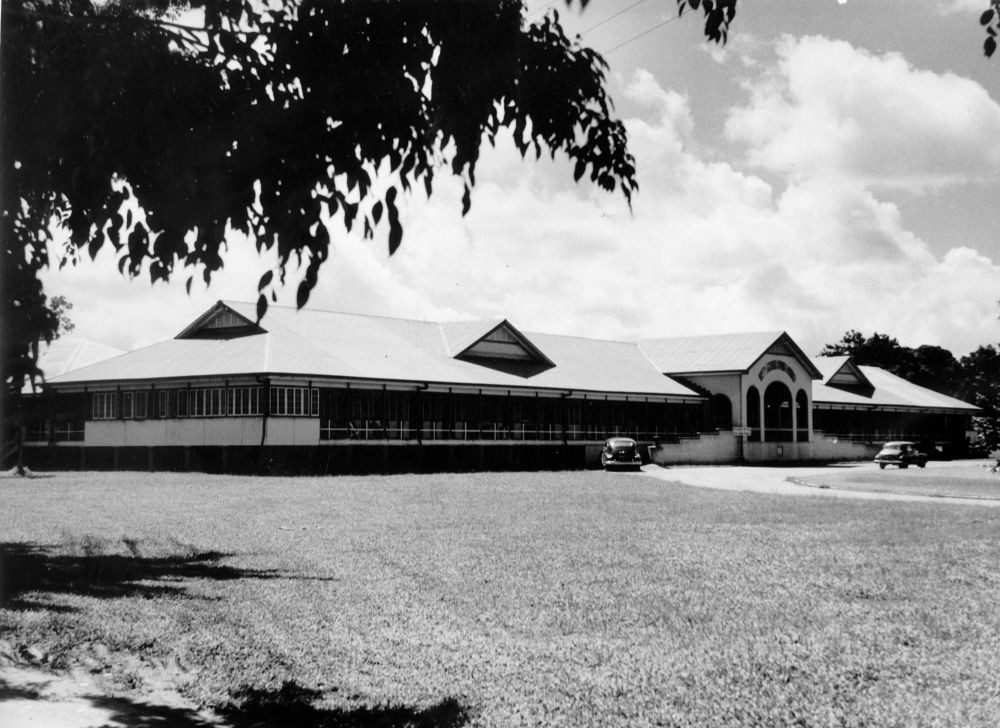As Queensland navigates the impact of a pandemic on our way of life, spare a thought for the frontline of this particular battle—Queensland’s hospitals. While many Queenslanders breathe a sigh of relief that we’ve successfully flattened the curve, our actions over the coming months will determine whether our hospitals see a resurgence of cases.
This blog story is the first in a series of celebrations of the history of hospitals and healthcare workers in Queensland. We begin in Ingham, a small town about an hour’s drive north of Townsville. Ingham is central to the local sugar cane industry and home to one of Australia’s largest sugar mills. Initially sugar cane plantation labour was provided predominantly by indentured South Sea Islanders, prompting the establishment of a hospital with a “special wing for the reception of Polynesians”.
Ingham’s Hospitals
In early 1884 plans were underway to build a public hospital in Ingham, in a plain style “surrounded by extensive verandas” reminiscent of “East Indian bungalows” to cope with the climate.

Ingham Hospital, Queensland, ca. 1887. (John Oxley Library collection)
While some sources report that the first hospital building was constructed in 1883, the Ingham Hospital wasn’t formally established until August 7, 1885. By late 1885 tenders were invited for additions to this hospital, and in early 1886 a request for Government funding assistance to add an additional ward was met with resistance. In early 1889 Ingham Hospital confirmed it had built the ward out of its own funds, for the “use of Asiatics and other aliens that are employed on the plantations”.

Women's ward of the Ingham Hospital, Queensland, 1916. (John Oxley Library collection)
In 1929 the private Italian Hospital (known as the Ospedale Cardarelli) was built, to improve healthcare for non-English speaking Italian migrants and ostensibly to promote better relations between Italian and British subjects. Racial tensions were running high at this time, and when Italy joined the war in 1940 many Italians were sent to internment camps, including the Cardarelli Hospital’s Dr Francesco Piscitelli. There were calls for their release in 1942 because of labour shortages on the sugar cane plantations in north Queensland. The hospital continued to operate until 1946 and the building remains to this day.

Cardarelli Italian Hospital in Ingham, Queensland, ca. 1936. (John Oxley Library collection)
It was widely agreed that Ingham’s public hospital was in dire need of an upgrade as early as 1935, yet funding was a contentious issue. The new building was officially opened on September 3, 1938.

Ingham District Hospital building and driveway, Queensland, 1953. (John Oxley Library collection)
In 2009 a new Ingham Hospital was opened and remains on the same block of land that housed the original buildings.
Stacey Larner - Librarian, State Library of Queensland
Comments
Your email address will not be published.
We welcome relevant, respectful comments.